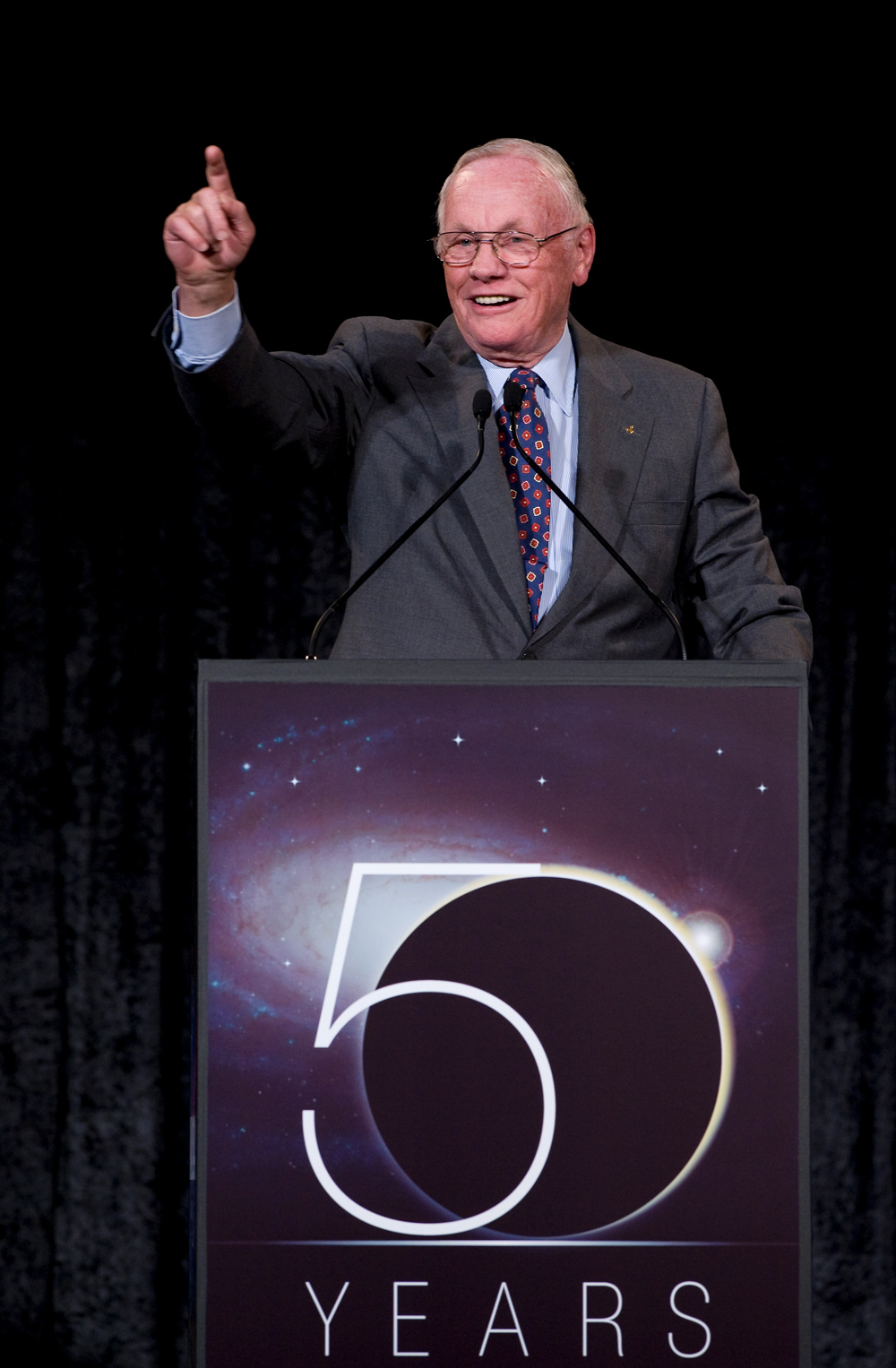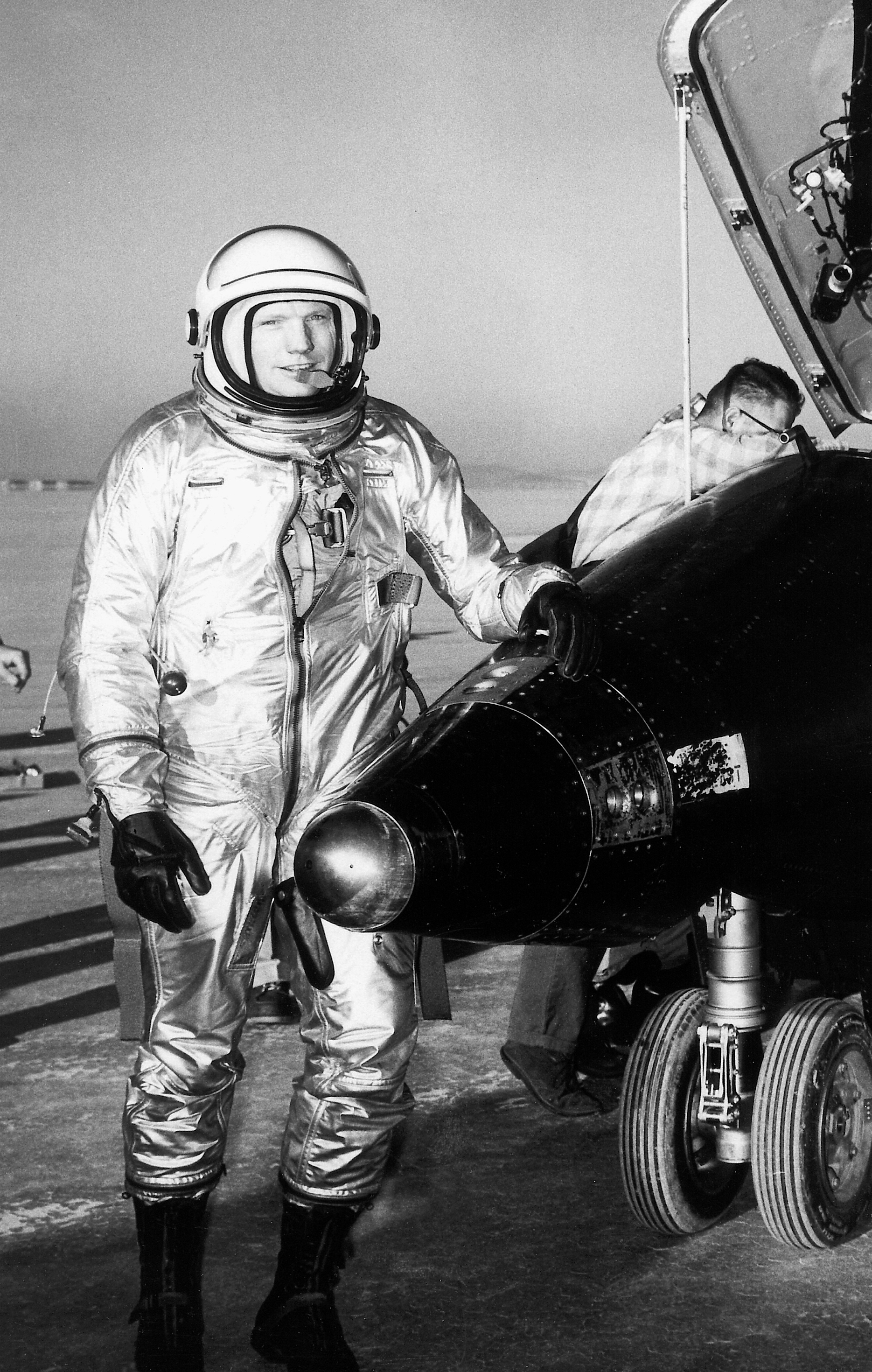Neil Armstrong, X Prize and SPACE.com: A True 'Right Stuff' Moment

Editor's Note: Neil Armstrong, the first person ever to walk on the moon, died Saturday (Aug. 25), but the legacy of his "one small step" will live on in the history books. Here, SPACE.com science and technology writer Dave Brody recalls a particular moment with Armstrong from 2004, when the iconic astronaut was serving on the board of trustees of SPACE.com.
On the morning of Sept. 29, 2004, Neil Armstrong was participating in an executive meeting of SPACE.com in New York City as an investor and board member. At the same time, 2,600 miles to the west, Scaled Composites was preparing to launch its SpaceShipOne in the first of two competitive flights to capture the Ansari X Prize.
We interrupted the meeting at 11 a.m. and invited the board members to watch the video feed from X Prize (a media partner of SPACE.com) under way in Mojave, Calif.
Neil was standing about 10 feet from our large plasma monitor when Scaled's WhiteKight carrier aircraft released SpaceShipOne at 10 minutes past the hour. Moments into the drop, pilot Mike Melville fired the hybrid rocket motor and pulled up sharply.
The motor was capable of providing 82 seconds of thrust. Less than a minute into that burn, however, Neil quickly strode toward the screen, watching closely. He'd caught something nobody else saw. "That's a pretty good roll ...," he said very, very quietly. Slowly, the rest of us began to notice the rocket motor's contrail had taken on a corkscrew shape over the track of the last 17 seconds of powered flight.
None of us yet knew what Neil Armstrong had already figured out: Up on SpaceShipOne, Mike Melville had cut the engine’s power early. Mike was running out of atmosphere in which to use the ship's aerodynamic controls to damp that dizzying roll. [Mike Melville Rolls in SpaceShipOne (Video)]
What we could not see and could not have known (except Neil) was that out there, climbing past 250,000 feet over the Mojave, Melville was doing battle with roll rates upward of 180 degrees per second. Neil knew Mike’s world was literally flipping upside down every 2-3 seconds, and that Melville would have to block out disorientation while brain-working his way through a shift from correcting with flight control surfaces (in atmosphere) to correcting with thrusters (in vacuum).
Breaking space news, the latest updates on rocket launches, skywatching events and more!
In true "Right Stuff" fashion, Melville let the rolling continue as he climbed. He even let it roll while he reconfigured SpaceShipOne to its feathered "shuttlecock" re-entry mode. Then he methodically and minimally damped it out, knowing that the feathered surfaces could also play a stabilizing role. (Melville would later comment that the roll was "pretty cool.")
As the vehicle – which would fly again the following week to claim the Ansari X Prize – made its way back into breathable space, Neil turned to our group. "I had one like that on the X-15," he said.
Armstrong explained to us that in such vehicles, the pilot's manually flown angle of attack is extremely critical to preventing any lack of symmetry in the motor's thrust from turning into "mission-threatening" rolls; and it makes a big difference in maximizing the final altitude of the ballistic arc.
Back on April 20, 1962, during a test of the X-15 rocket plane– in many ways, the direct ancestor of SpaceShipOne – Neil had literally skipped off the atmosphere. His flight track ballooned far to the south of its plan, sailing over Pasadena and northern Los Angeles, before he got his ship turned around and down onto the dry lakebed of Edwards Air Force Base. At 12.5 minutes, it would be the longest flight of that X-15 program.
With those memories near to him that day at SPACE.com, Neil Armstrong could not have been less jealous, or more complimentary, of Scaled Composites' pilots and engineers.
Neil has been called a "pilot's pilot" and "an engineer's engineer." For so many of us, has was so much more.
Follow SPACE.com on Twitter @Spacedotcom. We're also on Facebook & Google+.

Dave Brody has been a writer and Executive Producer at SPACE.com since January 2000. He created and hosted space science video for Starry Night astronomy software, Orion Telescopes and SPACE.com TV. A career space documentarian and journalist, Brody was the Supervising Producer of the long running Inside Space news magazine television program on SYFY. Follow Dave on Twitter @DavidSkyBrody.

